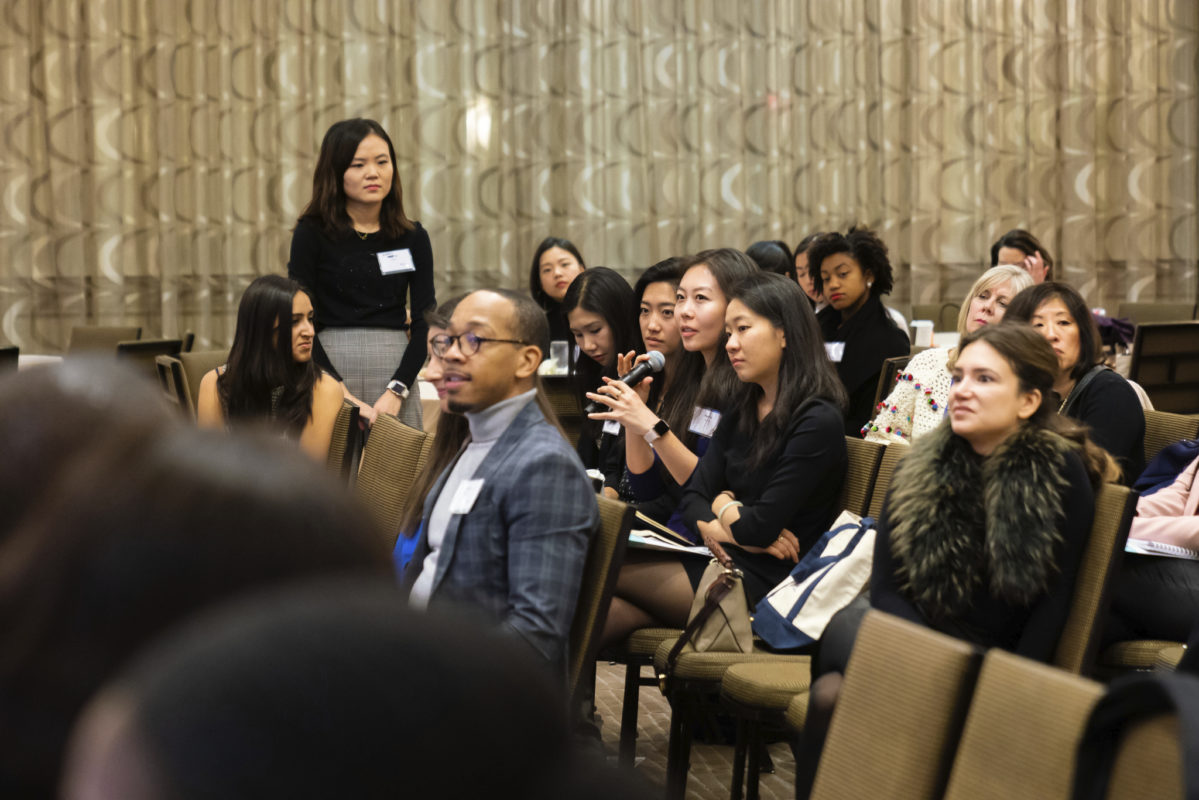“The lines have blurred, and continue to blur, around the definition of retail,” said Marketing lecturer and AlixPartners’ Managing Director Bryan Eshelman at the 2019 Wharton Graduate Retail Conference.
On Friday, February 22, MBA students gathered in Center City Philadelphia to hear retail professionals discuss brand-building, partnerships and strategic alliances, and health and wellness. The annual conference, hosted by the Wharton Graduate Retail Club and the Jay H. Baker Retailing Center, covered current trends and developments in the ever-changing retail industry.

The event featured panelists from popular companies Away, Sweetgreen, The Wing, Theory, Lola, Aaptiv, and more. The professionals discussed important topics such as disruption caused by DTC (direct-to-consumer) brands, rushed omnichannel attempts by traditional retailers, and rising consumer power.
In the afternoon, keynote speaker Jeff Raider, WG’10, co-founder of Warby Parker and co-founder and co-CEO of Harry’s, shared insights from his own successes as an entrepreneur.
His 3 Key Takeaways:
1. Understand and Cater to Your Customer Base
In retail, supply outpaces demand, making customer loyalty the number one driver for success. Raider stressed the importance of communication in understanding how to better serve the target market and build a loyal customer base. For example, after receiving countless requests to release a body wash product, Harry’s R&D team responded to customer needs by launching one. Harry’s also follows up with an email after every sale, and 10 percent of customers respond and engage in an open dialogue with the company.
2. Have a Strong Brand and Clear Value Proposition
With today’s surplus of brands, differentiation is key in capturing market share. Brands must address a dearth in the market, understand their core customers, and cater directly to their needs in order to remain relevant in this overpopulated industry. Harry’s value proposition of “a great shave at a fair price” is based on the founders’ frustration about shopping for razors: “We as consumers were not given the experience that we wanted,” Raider said. In order to uphold their motto, the company sought clarity and simplicity. They avoided confusing promotions and guaranteed a fair price consistent across all distribution channels.
3. Recognize Growth Opportunities
The popularity of e-commerce has become a growing threat to traditional brick-and-mortar stores, but Raider believes that “brands need a home” and that physical stores are a great marketing resource.
After the success of Harry’s first physical location, a barber shop in New York City that was open for five years, Raider hopes to build permanent stores in the future. Additionally, Harry’s has partnered with Target to sell products in physical locations, increasing exposure to new customers and creating another way for current customers to shop their products.

The Future of the Retail Industry
Raider predicts that low barriers to entry and evolving consumer preferences will encourage retail innovators to create more brands in the future. Just as Warby Parker and Harry’s changed their respective industries, there are countless opportunities to fix market deficiencies.
“The goal is to expand to other CPGs (consumer packaged goods) to solve unmet customer needs that create better experiences for people. Huge brands dominate the retail shelves, maintain market share, and may not put customers first,” said Raider. “They are not going to be the brands that our kids use.”
— Erin Lomboy, W’21
Posted: April 18, 2019


















